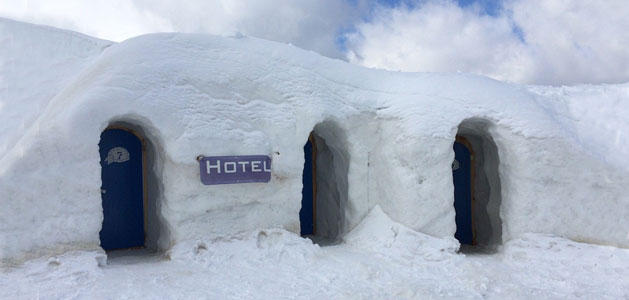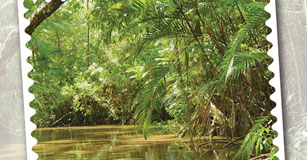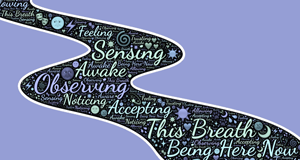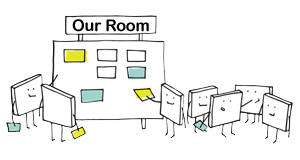Hibernation Hotel
Students learn details about a specific animal’s hibernation and design a hotel room with everything the animal needs for a successful hibernation.

Task
Animals react to cold weather in many different ways. Some have adaptations that let them survive the cold, some migrate, and others hibernate.
After exploring a range of animal responses, students will learn more about a specific animal that hibernates and design a hotel room perfect for its hibernation needs of food, safety, and warmth.
Engage
Activate prior knowledge by asking students if they know of any animals that hibernate.
While most students may only associate bears with hibernation, they may still be able to use this knowledge to answer question about why animals hibenate with ideas like cold weather and lack of food.
Read a story like Hibernation Station by Michelle Meadows or A Bed for Bear by Clive McFarland to engage them in the concept of hibernation and other ways animals adapt as the weather gets colder and the seasons change.
Use books and videos to introduce students to examples of other animals that hibernate, such as groundhogs, snakes, bees, and bats.
Explain to students that they will be learning how a specific animal prepares and survives hibernation so they can successfully design a “hibernation hotel” that meets all of these animal’s needs.
Create a list of animals you want your students to choose from. You may want to focus on animals that have accessible hibernation information for your young learners. There are several informational texts and web site resources for primary learners in this lesson’s Resources list.
Share additional books and research materials with students or learn about a single animal as a class.
Give each student a cluster organizer to record the information they find. The smaller space on a cluster organizer helps keep emerging writers from being overwhelmed by a blank page or worksheet, while still building essential research skills.
Create a Graphic Organizer
Need a thought web, timeline, flowchart, or other graphic organizer for a lesson?
CreateHave students focus on one question or area at a time. Guide their work and research with questions like:
- Where does my animal hibernate?
- How does it prepare to hibernate?
- What does the animal eat before or store to eat during hibernation?
- What predators does this animal need protection from?
Create
Use paper and art supplies or a paint program, like Wixie, to design a hotel room that meets the needs and wants of your animal.
As students design their hibernation hotel room, prompt with questions like:
- What does the sleeping area have in it?
- What is it like? Warm, soft, dark?
- Are there snacks to eat if the animal wakes up?
- What features keep the animal safe?
When they are done with the visual design, have students record their voice to explain their hotel room. If you aren’t using a digital tool, have students describe their room to you while you write their ideas down so you can attach the description to the image.
You can also have students write suggestions for What to do before you arrive. Students can share suggestions like like eat extra berries, nuts, and salmon.
Share
Have students print their designs, descriptions, and suggestions to display in your classroom or library media center. If they include student voice, share the digital versions on your classroom web page.
Invite a science teacher or local park ranger to view the designs and ask students about important features in them.
You may also be able to work with staff at a local nature center or preserve to provide a real-world audience for student efforts. Your students can present and share their work with staff and visitors in a formal setting. If students have created digital diaries, share links to student work through QR codes so that patrons can use their personal devices to gain additional perspectives on the animals that live in the park or preserve.
Assessment
Explore the guided notes students have for their hibernating animal.
Create a checklist to help guide student work during research, writing, and final diary publishing.
Review student’s cluster diagrams and talk to them about their notes to clarify thinking and improve comprehension of the informational texts they are encountering.
The final design and explanation serve as a performance task you can use to evaluate student understanding of habitat and behavioral adaptation.
Resources
Clive McFarland. A Bed for Bear. ISBN: 978-0062393326
Michelle Meadows. Hibernation Station. ISBN: 1416937889
Elaine Pascoe. How and Why Animals Prepare for Winter. ISBN: 1574716646
Henrietta Bancroft. Animals in Winter (Let’s Read and Find Out Science). ISBN: 1442006463
National Wildlife Federation - Hibernation: The Big Sleep
Standards
Next Generation Science Standards - Life Science Grades 3-4
K-LS1-1 From Molecules to Organisms: Structures and Processes
Use observations to describe patterns of what plants and animals (including humans) need to survive.
K-ESS2-2 Earth's Systems
Construct an argument supported by evidence for how plants and animals (including humans) can change the environment to meet their needs.
K-ESS3-1. Earth and Human Activity
Use a model to represent the relationship between the needs of different plants and animals (including humans) and the places they live.
K-2-ETS1-1. Engineering Design
Ask questions, make observations, and gather information about a situation people want to change to define a simple problem that can be solved through the development of a new or improved object or tool.
Common Core Standards for English Language Arts
CCSS.ELA-LITERACY.W.K.7
Participate in shared research and writing projects.
CCSS.ELA-LITERACY.SL.K.5
Add drawings or other visual displays to descriptions as desired to provide additional detail.
CCSS.ELA-LITERACY.SL.K.6
Speak audibly and express thoughts, feelings, and ideas clearly.
ISTE NETS for Students 2016:
3. Knowledge Constructor
Students critically curate a variety of resources using digital tools to construct knowledge, produce creative artifacts and make meaningful learning experiences for themselves and others. Students:
a. plan and employ effective research strategies to locate information and other resources for their intellectual or creative pursuits.
b. evaluate the accuracy, perspective, credibility and relevance of information, media, data or other resources.
c. curate information from digital resources using a variety of tools and methods to create collections of artifacts that demonstrate meaningful connections or conclusions.
d. build knowledge by actively exploring real-world issues and problems, developing ideas and theories and pursuing answers and solutions.
6. Creative Communicator
Students communicate clearly and express themselves creatively for a variety of purposes using the platforms, tools, styles, formats and digital media appropriate to their goals. Students:
a. choose the appropriate platforms and tools for meeting the desired objectives of their creation or communication.
b. create original works or responsibly repurpose or remix digital resources into new creations.
c. communicate complex ideas clearly and effectively by creating or using a variety of digital objects such as visualizations, models or simulations.
d. publish or present content that customizes the message and medium for their intended audiences.









